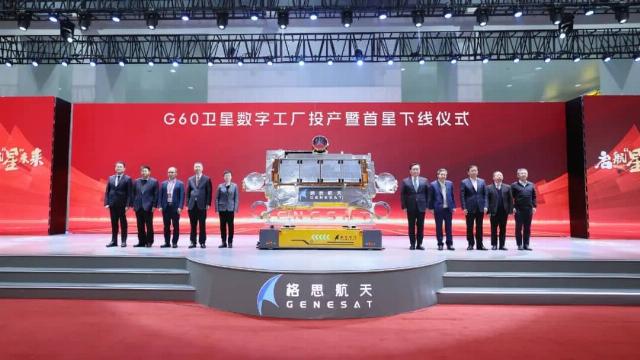The success of the Starlink satellite system is undeniable, and the Celestial Empire is striving to catch up with the American company SpaceX by all means. A few years ago, two similar projects were launched in China at once. One of them, which received the poetic name "A Thousand Sails", finally entered the deployment stage.
The Changzheng-6A rocket (CZ-6A) launched from the Taiyuan cosmodrome on August 6, at 09:42 Moscow time (06:42 UTC), and launched 18 vehicles of the G60 Qianfan Xingzuo grouping (literally— "Constellation of a Thousand Sails"). According to the SpaceNews portal, the Chinese Aerospace Science and Technology Corporation (CASC) recognized the launch as a success.
The satellites have been placed in a circular polar orbit with a height of about 800 kilometers. Their characteristics are not disclosed. It is known that these devices are designed to resemble the Starlink chassis of the first production versions (v 0.9 and v 1.0) — flat rectangular parallelepipeds weighing approximately 250 kilograms, having one folding solar panel and the ability to change their orbital parameters.
It is worth considering that in open sources you can find only one photo of the G60 satellite, taken at the presentation of the project in December 2023. At the same time, Shanghai Spacecom Satellite Technology (SSST), the operator of the grouping, announced that mass production of the devices had begun and the first of them had rolled off the assembly line.
Nevertheless, it is difficult to say what exactly was shown on stage at that time — a mock-up, an engineering sample or the very first serial satellite of the Constellation of a Thousand Sails.

The only known satellite photo for the G60 grouping is Qianfan Xingzuo
Image source: Shanghai Observer
At the first stage, the grouping will consist of 1,296 devices, half of which, according to previously announced plans, will be withdrawn by the end of 2025. In this form, Thousand Sails will provide high-speed satellite Internet only to China. It is not specified in full or in part. The preliminary appearance of the complete constellation includes 14 thousand vehicles.
An interesting choice of carrier is Changzheng—6A. For this rocket, 18 satellites weighing 250 kilograms, launched into polar orbit, is the maximum load.
Given that six hundred more such devices need to be launched in a little over a year, it is logical to assume that the next launches will be performed on more powerful media. And since there are no reusable rockets in the arsenal of Chinese cosmonautics, the launch of its Starlink counterpart will cost China much more than SpaceX.
In addition to the financial side of the issue, the planned rate of withdrawal is also questionable. In February, CASC representatives stated that Chinese cosmonautics was "aiming" at a hundred launches per year. At the same time, the above-described launch of Changzheng-6A with the first G60 satellites in early August became the 35th for China.
SSST's activities are subsidized by the administration of Shanghai, the company's hometown. In the fall of 2023, the local government promised that it would do everything possible to develop the local space economy, and estimated its size at $28 billion by 2025. Beijing has similar regional initiatives. For comparison, the annual revenue of the already partially deployed and functioning Starlink in 2024 is estimated at $ 6.6 billion.

